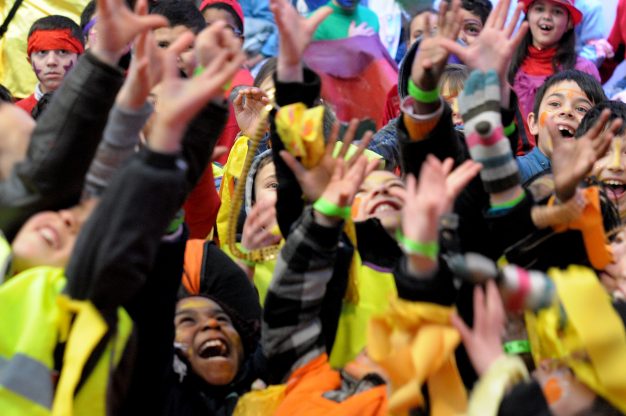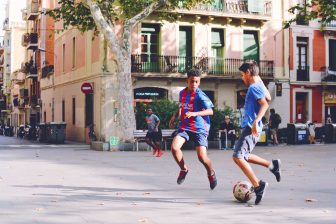
A toolkit for developing child friendly towns and cities
A child friendly city implements children’s rights in local policy. Cities can use the translated Unicef toolkit that consists of three steps: measuring the child friendliness – perception research with children – formulating a strategy. Cities can then apply for the certification, ‘Child Friendly City’.
Toolkit: assessment in three steps
1) How child friendly is the city?
Children’s lives are not only about leisure time, but also about housing, mobility, education, public space, security, health, wellbeing, environment and influencing local policy. To measure how child friendly these domains are, we use four instruments:
- Data analysis
- Online survey
- Control groups for children and young people
- Focus groups (with local civil servants, stakeholders and young people)
Using the results of this research, the city selects a limited number of priorities to be subjects of the perception research in step two.
2) How do children experience the city?
The emphasis is on qualitative research on the priorities. It’s important that a diverse group of children and young peoples (in age, sex, educational level, vulnerable groups in society, geographical area) participate. The city uses child friendly methods to research the priorities. It’s not about opinions, but experience, perceptions, interpretations.
3) How can the city become more child friendly? (strategy)
In step 3, the city creates a vision of local child friendliness and a strategy: mandates for implementation, budgets and people; an action plan. The vision and strategy are based on the results of step 1 and 2.
Portfolio and certification
As the stakes of children’s rights are dynamic in time and space; being a child friendly city is a work in progress. A jury developed a set of criteria to evaluate the child friendliness of the local policy:
- A sure foundation for child friendliness
- Policy based on analysis
- Children and young people’s influence on local policy
- Other stakeholders’ influence on local policy
- A strategy for child friendly policy
Cities that want to apply for certification compose a portfolio to demonstrate how they live up to these criteria. Cities get the certification for six years.
The role of VVJ
VVJ (federation of local youth services in Flanders) translated the international toolkit into the Flemish context. Cities can use it independently, or can work with a consultant or coach, such as VVJ. Cities can also work on child friendliness in their own way, with their own means. VVJ is the ambassador of Child Friendly Cities in Flanders and continues to work on vision and strategy to keep the toolkit up-to-date. Imke Pichal coordinates the project in Flanders as a staff member of VVJ. She facilitates, coaches and supports cities in the process towards child friendly policy and coaches other facilitators and coaches of VVJ. She also supervises the implementation of the concept of child friendliness in all the services of VVJ. Imke is part of the jury of Child Friendly Cities in Flanders.
Author: Imke Pichal & Ilse Holvoet
Photo Credit: Photo by Imke Pichal
Interested in hearing more about this research? Join us at the Child in the City Conference in Ghent, Belgium on the 7-9th November!




